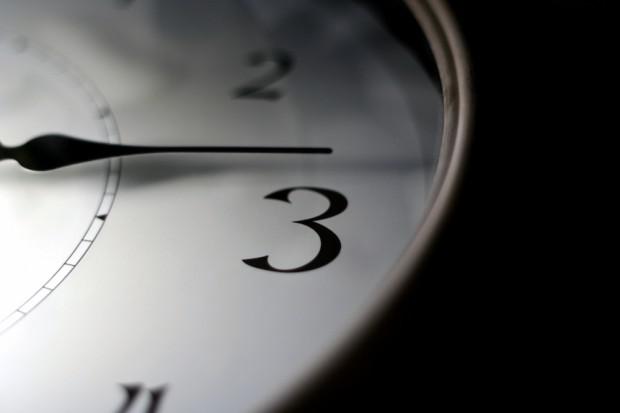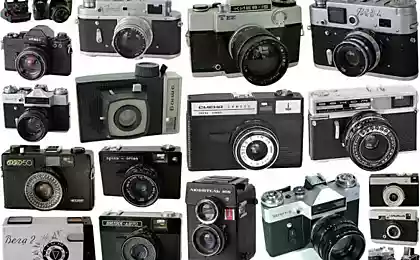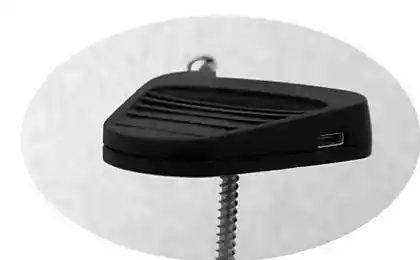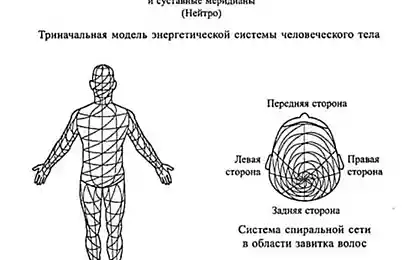539
Atom, chandeliers, nuktemeron, and another seven units of time, which you have not heard
Ain moment
When people say that they are "quite moment", they probably do not realize that promise free in exactly 90 seconds. After all, in the Middle Ages, the term "time" is the time a period of hours or 1/40, as it was customary to say, 1/10 points is 15 minutes. In other words, he has 90 seconds. Over the years, the time has lost its original meaning, but is still used colloquially to refer to an undefined but very brief interval. So why do we remember the time, but forget about Ghar, nuktemerone or something even more exotic?
AtomSlovo "atom" comes from the Greek term for "indivisible", and therefore is used in physics to determine the smallest particles of matter. But in the old days this concept applies to the shortest period of time. It was believed that the moment has 376 atoms, the length of each of which is less than 1/6 of a second (or 0 to 15957 seconds, to be exact).
2. GhariKakie only instruments and devices are invented in the Middle Ages to measure time! While Europeans vengeance exploited sand and sundial, the Indians used a clepsydra - Ghar. The hemispherical bowl made of wood or metal, were doing a few holes, and then put it into a pool of water. The liquid seeping through the slot, slowly fill the container until the severity of it is completely submerged at the bottom. The whole process takes about 24 minutes, so this range and was named in honor of the device - Ghar. At that time it was thought that a day consists of 60 Ghar.
3. LyustrLyustr - a period lasting 5 years. The use of the term has its roots in antiquity: lyustrum then designated a five-year period of time, completes the establishment of a property qualification of Roman citizens. When the amount of tax was determined, the count came to an end, and a solemn procession poured into the streets of the Eternal City. The ceremony ended with lustration (cleansing) - pathetic sacrifice to the gods on the Champ de Mars, to perform for the welfare of citizens.
4. MaylveyNe All is not gold that glitters. While the light-year, seemingly designed to determine the period, measures the distance, mileway, a mile-long path, used for timing. Although the term sounds like a unit of measurement of distance, in the early Middle Ages, it represents the interval of 20 minutes. That's how much the average takes a person to overcome a mile-long route.
5. NundinZhiteli Roman worked seven days a week, nonstop. On the eighth day, however, considered their ninth (Romans refers to the range and the last day of the previous period), they organized in the cities of huge markets - nundiny. Market day was called «novem» (in honor of November - the ninth month of the 10-month agricultural "Year of Romulus"), and the time interval between the two fairs - nundin.
6. NuktemeronNuktemeron, a combination of two Greek words «nyks» (night) and «hemera» (day), is nothing more than an alternative designation of our usual day. All that considered nuktemeronnym respectively, lasts less than 24 hours.
7. PunktV Medieval Europe point, also called the point, used to describe a quarter of an hour.
8. quadrant neighbor points era quadrant determined by the fourth day - a period of 6 hours.
9. PyatnadtsatPosle Norman Conquest word «Quinzieme», translated from French as "Fifteen", has been borrowed by the British for the determination of duties to replenish the state treasury at 15 pence from each pound earned in the country. In the early 1400s, the term has acquired and religious context: it was used to indicate the day of an important holy day and two full weeks following it. So «Quinzieme» turned into a 15-day period.
10. SkrupulSlovo «Scrupulus», translated from Latin, meaning 'small sharp stone ", first served as the pharmacy unit of weight equal to 1/24 of an ounce (about 1, 3 c). In the 17th century scruple, who became the symbol of a small volume, increased its value. He became used to indicate 1/60 of the circle (minutes), 1/60 minutes (seconds) and 1/60 of the day (24 minutes). Now, having lost its former meaning, transformed into a scruple scrupulosity - attention to detail.
via factroom.ru

When people say that they are "quite moment", they probably do not realize that promise free in exactly 90 seconds. After all, in the Middle Ages, the term "time" is the time a period of hours or 1/40, as it was customary to say, 1/10 points is 15 minutes. In other words, he has 90 seconds. Over the years, the time has lost its original meaning, but is still used colloquially to refer to an undefined but very brief interval. So why do we remember the time, but forget about Ghar, nuktemerone or something even more exotic?
AtomSlovo "atom" comes from the Greek term for "indivisible", and therefore is used in physics to determine the smallest particles of matter. But in the old days this concept applies to the shortest period of time. It was believed that the moment has 376 atoms, the length of each of which is less than 1/6 of a second (or 0 to 15957 seconds, to be exact).
2. GhariKakie only instruments and devices are invented in the Middle Ages to measure time! While Europeans vengeance exploited sand and sundial, the Indians used a clepsydra - Ghar. The hemispherical bowl made of wood or metal, were doing a few holes, and then put it into a pool of water. The liquid seeping through the slot, slowly fill the container until the severity of it is completely submerged at the bottom. The whole process takes about 24 minutes, so this range and was named in honor of the device - Ghar. At that time it was thought that a day consists of 60 Ghar.
3. LyustrLyustr - a period lasting 5 years. The use of the term has its roots in antiquity: lyustrum then designated a five-year period of time, completes the establishment of a property qualification of Roman citizens. When the amount of tax was determined, the count came to an end, and a solemn procession poured into the streets of the Eternal City. The ceremony ended with lustration (cleansing) - pathetic sacrifice to the gods on the Champ de Mars, to perform for the welfare of citizens.
4. MaylveyNe All is not gold that glitters. While the light-year, seemingly designed to determine the period, measures the distance, mileway, a mile-long path, used for timing. Although the term sounds like a unit of measurement of distance, in the early Middle Ages, it represents the interval of 20 minutes. That's how much the average takes a person to overcome a mile-long route.
5. NundinZhiteli Roman worked seven days a week, nonstop. On the eighth day, however, considered their ninth (Romans refers to the range and the last day of the previous period), they organized in the cities of huge markets - nundiny. Market day was called «novem» (in honor of November - the ninth month of the 10-month agricultural "Year of Romulus"), and the time interval between the two fairs - nundin.
6. NuktemeronNuktemeron, a combination of two Greek words «nyks» (night) and «hemera» (day), is nothing more than an alternative designation of our usual day. All that considered nuktemeronnym respectively, lasts less than 24 hours.
7. PunktV Medieval Europe point, also called the point, used to describe a quarter of an hour.
8. quadrant neighbor points era quadrant determined by the fourth day - a period of 6 hours.
9. PyatnadtsatPosle Norman Conquest word «Quinzieme», translated from French as "Fifteen", has been borrowed by the British for the determination of duties to replenish the state treasury at 15 pence from each pound earned in the country. In the early 1400s, the term has acquired and religious context: it was used to indicate the day of an important holy day and two full weeks following it. So «Quinzieme» turned into a 15-day period.
10. SkrupulSlovo «Scrupulus», translated from Latin, meaning 'small sharp stone ", first served as the pharmacy unit of weight equal to 1/24 of an ounce (about 1, 3 c). In the 17th century scruple, who became the symbol of a small volume, increased its value. He became used to indicate 1/60 of the circle (minutes), 1/60 minutes (seconds) and 1/60 of the day (24 minutes). Now, having lost its former meaning, transformed into a scruple scrupulosity - attention to detail.
via factroom.ru























